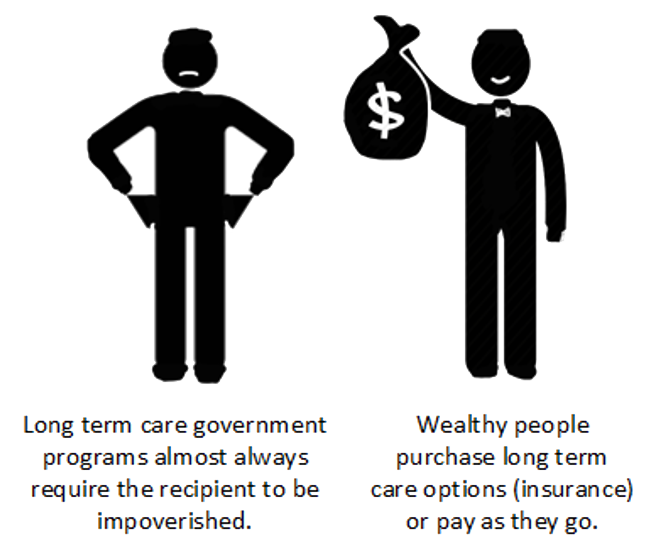“Aging in place” as a term means little. Aging in place is a term of art. We’re all aging. We’re all in a place. Therefore, we’re all aging in place. The industry is equally cavalier in its use. However, as a political movement, it means a lot.
The Centers for Disease Control and Prevention (CDC) has a definition for aging in place: “the ability to live in one’s own home and community safely, independently, and comfortably, regardless of age, income, or ability level.” This is a definition policymakers and government entities are adopting. With this focus, they are starting to apply resources accordingly.
Here’s how it works. The CDC researches senior health and well being. When they arrive at a definition, they turn that definition into policy recommendations. Government entities that allocate funds for seniors take the advice of the CDC. For example, the CDC believes those “aging in place” should be able to receive care or assistance from local, even family, caregivers. This is great news for seniors, and suggests that government programs will continue moving toward paid for, in-home services. Even those where family provides the services.
Many of the original legislative Acts supporting seniors have as their primary objective allowing seniors to live on their own terms, which included things like adequate income, suitable housing, dignity, honor, freedom and autonomy. The “aging in place” movement is the modern terminology supporting these objectives. The current iteration of senior government agencies uses the term community-based living.
In fact, what was once called the Administration on Aging (AoA) is now under the Administration for Community Living (ACL).
The CDC definition has rightfully given encouragement to seniors wanting to stay in their home. But this excitement is most closely connected to areas where senior services can be economically delivered to home-based seniors. In other words, high density areas, or areas within a few miles of large-scale medical services (e.g., hospitals, large skilled nursing facilities, etc.).
The reality of the term “aging in place” is that it refers to seniors who simply stay where they’ve been for over twenty years. Homes where seniors raised children or have been in since they were in their sixties. The home may be a stand-alone home, a condo, townhouse, apartment or mothers-in-law apartment.
CarePlanIt defines the term as seniors who’ve been in a home and choose to stay as they age. In other words, aging in place is the default position for Agers that haven’t taken their aging housing options seriously.
But CarePlanIt always asks you to consider housing as an IAD issue: independent, assisted or dependent. In that sense, staying in your home and aging in place is simply a literal statement of reality. Not a definition of Housing or a Health need. We’re stuck using that definition because it’s used so frequently to describe the most common place seniors age: their historical home.
As of 2019, it’s the preferred place for seniors. It’s what most of us want. It’s what our parents wanted, or will want. The overriding desire for seniors to stay in their homes now impacts government policies.
Always keep in mind that long term care is very expensive. Annual costs for assisted living runs between $36,000 and $250,000. The spread is between paying for in home caregivers a few hours a day versus moving into an assisted living facility or using caregivers every hour of every day. Skilled nursing care and moving into a skilled nursing facility runs annually between $120,000 and $500,000. The spread is for the same reason.
Here’s the point: the government won’t cover full long-term care costs unless it absolutely must. When it must, it requires the recipient’s poverty. This poverty qualifies you for Medicaid (your State’s version).

The government now supports programs to help seniors age in place. This includes in-home health care. The most common are visits from nurses and physical therapists that visit a senior’s home after hospitalization or a stay in a skilled nursing home. One of the more recent government programs is paying relatives to care for senior family members. There’s every indication that the government will try and expand in-home services offered to seniors.
See Long Term Services & Support
Also, see the Long Term Services & Support Section.
Allowing relatives to care for seniors.
In addition, many states now allow relatives of seniors to get paid for providing help to seniors. Keep this in mind when selecting a senior housing option. On the plus side, if you have a large family, and live nearby, this may be a great option. Maybe a child is a retired nurse or caregiver and wants some extra money. Maybe a grandchild or a great-grandchild is in school and wants some extra money. Either way, living nearby family members might allow you to take advantage of this resource.
On the negative side, not all senior defined communities allow this type of live-in arrangement. Active senior communities often forbid any long-term live-in arrangement other than for those on the initial lease. To be sure, read the Covenants, Conditions, and Restrictions.